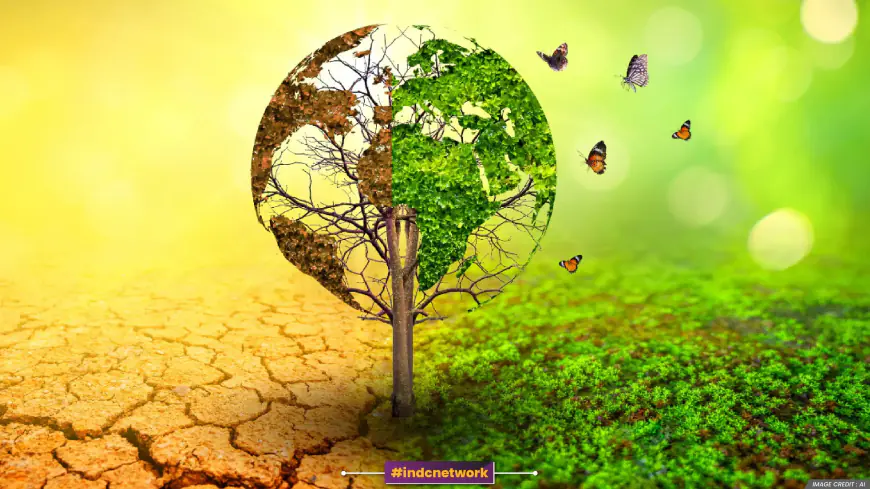
As the world grapples with climate change and environmental degradation, the demand for sustainable technology has surged. Innovations in this space are not just about reducing carbon footprints but also about enhancing efficiency, promoting renewable energy, and creating a circular economy. From smart grids to biodegradable materials, a variety of groundbreaking technologies are emerging to address pressing environmental issues.
Renewable Energy Revolution
One of the most significant shifts in sustainable technology is the rapid advancement of renewable energy sources. Solar and wind power have become mainstream, thanks to improved efficiency and decreased costs. For instance, photovoltaic cells are now more effective at converting sunlight into electricity, making solar panels a viable option for residential and commercial buildings alike. Wind energy, too, has seen advancements in turbine design, enabling larger turbines to capture more wind and generate more power.
Moreover, energy storage solutions, particularly lithium-ion batteries, are evolving to enhance the viability of renewable energy. Innovations in battery technology, such as solid-state batteries, promise longer life spans and quicker charging times, which can help balance supply and demand in renewable energy systems. As these technologies mature, they not only provide cleaner energy sources but also support grid stability.
Smart Grids and Energy Efficiency
The integration of smart grid technology is another critical development in sustainable tech. Smart grids utilize advanced communication technologies to monitor and manage electricity flows more efficiently. This system allows for real-time data collection and analysis, enabling utilities to optimize energy distribution, reduce waste, and enhance reliability.
Moreover, smart meters and connected devices empower consumers to monitor their energy usage actively. By providing insights into energy consumption patterns, individuals can make informed decisions that reduce their energy bills and environmental impact. The push for energy-efficient appliances is also gaining momentum, with innovations such as smart thermostats that learn user behaviors and adjust heating and cooling accordingly, thus minimizing energy waste.
Sustainable Transportation
Transportation is a significant contributor to greenhouse gas emissions, and sustainable technology is at the forefront of efforts to mitigate this impact. Electric vehicles (EVs) have surged in popularity, driven by advancements in battery technology, government incentives, and a growing awareness of environmental issues. Major automakers are investing heavily in EV development, with many planning to transition to all-electric lineups within the next decade.
In addition to personal vehicles, public transportation systems are becoming more sustainable. Electric buses and trains are being adopted in cities worldwide, reducing reliance on fossil fuels. Innovations in alternative fuels, such as hydrogen and biofuels, are also contributing to cleaner transportation options. These efforts not only reduce emissions but also enhance urban air quality and promote healthier communities.
Circular Economy and Waste Management
The concept of a circular economy is gaining traction as a sustainable alternative to the traditional linear model of production and consumption. This approach emphasizes the importance of reusing, repairing, and recycling materials rather than disposing of them. Technologies such as advanced recycling processes and biodegradable materials are critical to this shift.
For example, companies are developing biodegradable plastics made from natural materials, which break down more easily in the environment. Additionally, advancements in chemical recycling technologies are allowing for the breakdown of plastics into their original monomers, which can then be repurposed into new products. This not only reduces waste but also conserves resources, making the manufacturing process more sustainable.
Agriculture and Food Technology
Sustainable technology is also making strides in agriculture, where innovations are aimed at reducing environmental impacts while increasing food production. Precision agriculture employs data analytics, satellite imagery, and IoT devices to optimize farming practices. Farmers can monitor soil conditions, crop health, and weather patterns, enabling them to make informed decisions that enhance yields and reduce waste.
Vertical farming and hydroponics are gaining popularity as urban agriculture solutions that require less land and water than traditional farming. These methods allow for year-round crop production and can significantly decrease the carbon footprint associated with transporting food. Additionally, lab-grown meats and plant-based alternatives are emerging as sustainable food options that can alleviate some of the environmental burdens associated with livestock farming.
The Future of Sustainable Technology
The convergence of these innovations represents a transformative shift towards a more sustainable future. As awareness of climate change and environmental issues grows, the market for sustainable technology is expected to expand even further. Governments, businesses, and consumers are increasingly prioritizing sustainability, driving investment and research into new technologies.
However, challenges remain. The transition to sustainable technology requires significant investment and infrastructure changes, as well as regulatory support. Public acceptance and behavior change are also crucial for widespread adoption. Education and awareness campaigns can help bridge these gaps, fostering a culture of sustainability.
In conclusion, the rise of sustainable technology offers promising solutions to some of the most pressing challenges facing our planet. By embracing innovation in renewable energy, smart infrastructure, sustainable transportation, waste management, and agriculture, we can work towards a greener, more sustainable future. As we move forward, collaboration among governments, industries, and individuals will be essential to harness the full potential of these technologies and ensure a livable world for future generations.